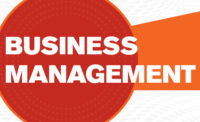Marketing is an ever-changing game for business owners. There are multiple avenues and opportunities for growth through marketing, but not every channel is successful, especially as technology advances. Take telephone marketing, for example. What once was considered a go-to marketing tool for a business is now avoided. In fact, with the implementation of the National Do Not Call Registry, caller ID, and other tools used to ignore phone solicitors, telemarketing is on its way out, much like door-to-door sales.
Martin Hoover, president of Empire Heating and Air in Decatur, Georgia, is one of many contractors that doesn’t use telemarketing for business anymore. Instead, he prefers to use a mix of marketing efforts that create a complete plan.
“In the early days, telemarketing was a core of our business development,” he said.
That is no longer the case, however, as Hoover’s company now leans more toward digital avenues in its marketing mix, including online, television, and search engine optimization (SEO). Another type of marketing available in the digital mix is email marketing. Used in various ways for different reasons, this type of marketing provides contractors a level of communication not always achieved through brand awareness marketing — a relationship.
According to Brandon Doyle, marketing manager and senior account manager for Blue Corona, email marketing accomplishes two primary goals in an excellent fashion. One is to maintain relationships with existing customers, and the second is to convert leads into jobs.
“To accomplish staying top of mind, a lot of HVAC companies send customers things like timely promotions, educational articles, and industry news,” said Doyle. “As for booking jobs, email marketing is a great way to build your database of homeowners to market to in the future. A large portion of that database includes prospects that did not convert into a booked job. These are prime candidates to continually market to and, hopefully, turn into new customers that result in increased leads and sales.”
Established in 2007 in Gaithersburg, Maryland, Blue Corona is an inbound web marketing, analytics, and optimization company. Its goal is to help customers accurately track advertising results to get more leads and sales from the web. According to the company, email marketing should concentrate on the quality of the content as opposed to the quantity. Contractors insisting on quantity when it comes to email marketing run the risk of becoming permanent spam, said Doyle.
“We recommend to our HVAC clients not to send more than a couple of emails per month to their database, and to make those emails worthwhile to read,” he said. “What I mean by this is that email content should not be 100 percent sales driven. You should provide additional value to your subscribers through the use of educational articles, energy efficiency tips, holiday greetings, well wishes, and other helpful information 80 percent of the time. The other 20 percent of emails are used to promote special offers and sales-related topics.”
GATHERING EMAIL LISTS
Contractors looking to email their customers are often faced with the question, “How do I start my database and where do I get the addresses from?”
Alyssa Young, vice president and director of digital marketing at KickCharge® Creative, Washington, New Jersey, explained that there are optimal ways to gather email lists.
“Request an email address and permission to use it for the company news every time you sign up a new customer,” she said. “Build it into your process when you’re gathering the customer’s contact information.”
To help make this process simpler, Young suggested that the company schedule a monthly reminder to export the email list and import newly gathered customers into the email software. She also suggests that companies include a newsletter subscription checkbox on the contact forms on their websites.
“These feed directly into the email software, so they require no manual step to update the subscriber list,” said Young.
IMPROVING OPEN RATES
Despite its effectiveness, email can be ignored, deleted, lost in the shuffle, or trapped in a customer’s spam folder. Some emails are never opened, and though it didn’t cost anything to send it, the inherent value of the message was lost. There are strategies to improve the open rates of an email, though. Doyle explained that when contractors are trying to improve open rates, they are primarily focused on the subject line of the email. Making the subject line personal and keeping it short are two ways to improve open rates.
“If you can, use the first name of the person you’re emailing,” said Doyle. “This builds trust and makes a personal connection, regardless if it’s an existing customer or a contact in your database that didn’t convert.”
The reasoning behind keeping the subject line short is summed up in two words — mobile phones. Although reading email is done on the computer, there is a high number of users that read email strictly on their mobile phones. With a short subject line, the message will never get cut off.
Doyle also suggests that contractors be upfront with what is actually inside the email. Gimmicky subject lines can do more damage than good. The customer may open the email, but when they don’t find what they expected in the content, that can trigger a negative reaction toward the company that sent it.
“Consumers don’t like to be duped,” said Doyle. “If you’re promoting a BOGO special, tell them there’s a BOGO special waiting inside. If it’s an educational email, tell the reader what topic they should expect.”
Beyond the subject line being a primary effector of open rates, timing comes into play as well. Depending on the audience, sending an email in the morning as opposed to the busy afternoon could make a big difference on the open rate. The important thing is to test different times and days to see what yields the best results for a specific email list.
“The day and time of day that are most effective for your audience can vary from company to company, depending on your geography and market demographics,” said Young. “Try lunchtime or late morning, in case your customers are more likely to linger over their email during their lunch breaks. Mondays and Fridays might be bad in one market but best in another.”
Publication date: 4/29/2019
Want more HVAC industry news and information? Join The NEWS on Facebook, Twitter, and LinkedIn today!






Report Abusive Comment